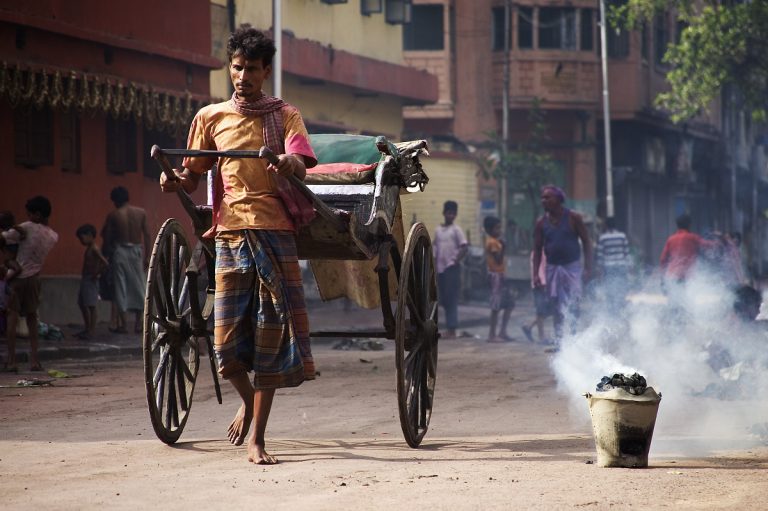What COVID taught us about female entrepreneurship and digital solutions
Uday finds solace in reading, listening to music, and visiting heritage sites. He currently works as a research associate at The Energy and Resources Institute, New Delhi. His research interests include climate policy, gender parity, and micro-economy.
From the early days of 2020, the world was introduced to the calamity of covid-19. With economic activities coming to a standstill, entrepreneurs everywhere saw their businesses plummeting. Even among entrepreneurs, gender and ownership remained key differentials in businesses’ ability to survive. As both the UN and World Bank report, female-owned enterprises have found it a lot harder to sustain themselves. [1].
As lockdowns prevailed indefinitely, adaptability to move to a more digital presence in marketing and business structures has become crucial to overcome the faltering traditional demand and supply chains. Over time, it’s noteworthy that governmental undertakings and private companies have made efforts to facilitate digital adaptation for businesses. Amazon (through Saheli) for instance, has helped rural MSMEs establish themselves online. Similarly, National Rural Livelihood Mission (NRLM) and State Rural Livelihood Missions (SRLM) have provided women-led MSMEs with financial and informational aid. [2]. But unfortunately, these efforts haven’t been sufficient. Despite being strongly impacted by the pandemic, in India, only 26% of entrepreneurs have availed governmental support highlighting the existing accessibility and information gaps. [3].
Furthermore, the ability to undertake digitization hasn’t been an equal privilege across genders. Women-led businesses are much less likely to have their websites or an online presence. They are also less likely to use a digital medium for marketing and customer interaction. [4]. A digital shift requires skills, knowledge, funds, and social freedom – determinants upon which women often lack crucially. This essay aims to highlight the limited extent of applicability of a digital solution for women-led MSMEs, reflecting upon its shortcomings, in light of the gender and rural-urban digital divide, as well as the consequent operational and social restraints over freedom and perception.
The Digital Divide and the burden of Rural-Urban disparity
Despite its strong surge towards digitization, India suffers from a glaring digital divide between its male and female populations. The Mobile Gender Gap Report (2021) informs that only about 67% of females in the country are mobile users as compared to 79% of males. Women don’t just lag in ownership of mobile phones, but their utilization as well. Only 25% of the women with mobile phones have smartphones in particular, while as many as 23% still utilize the basic ones with calling features only. Furthermore, women are about 15% less likely to use mobile internet services in comparison to men. [5].
In addition to the peril, is the worsening of this digital divide under the influence of rural-urban differentials. About 68% of the country’s population inhabits rural areas and is accustomed to much poorer access to digital facilities. [6]. While the broadband internet reach is nearly 51% on a national level, it’s as low as just 29% in rural areas. [7]. Similarly, as the fifth National Family Health Survey (2021) informs, 42% of females are familiar with the internet, as compared to 62% of men, nationwide. In rural areas, moreover, the figure drops sharply to 34% for women and 55% for men. [8].
While having access to digital tools is one key aspect of digitization, it isn’t the only one. The ability to utilize these tools needs to prevail as well. Even in cases where women do own mobile phones and have access to the internet, they‘re much less probable to utilize them for productive purposes beyond personal usage, or to learn about new features which could help them. For instance, despite the strong presence of the Indian population on social media platforms such as Facebook, less than 5% agree to a considerable increase in their networks through it. Moreover, for necessarily basic technological undertakings of productivity such as online cash transfers or net banking, women often rely on their male family members. [9].
For rural women, overcoming technological ineptitude becomes even more challenging. Firstly, they lack access to any sources of training, and secondly, illiteracy and unfamiliarity with digital media lead to suspicion over its security as well as raises the taboo of the internet being a place for ill activities. Most often, to even use digital devices, these women need to seek the permission of their male counterparts. [9]. The vast incidence of technological illiteracy among women in India, henceforth, becomes a heavy drawback to their aspirations around entrepreneurship.
Social customs which bifurcate roles and abilities of men and women, and school curriculums as well as vocational programs preaching gender-based suitability to jobs, all contribute to the widening digital divide. These restrictively associate women with traditional sectors with less technological scopes – into the roles of care, hospitality, and service – persisting inter-generational sustenance of a technological differentiation between genders.
Furthermore, such peculiar divisions help male-dominated business networks to establish themselves concretely. These are rather unwelcoming to women and thereby create a “confidence gap” for women who venture into entrepreneurship or other higher roles. [10]. This lack of self-confidence among female entrepreneurs is directly linked to risk disinclination, low motivation, and poor social networks for women-led MSMEs. [11] Resultantly, they remain distant from new opportunities and skills and continue to fall behind. Crucially, as men are able to adapt to newer business models and stay secure through their business contacts, female entrepreneurs depend on community support for informational links and supply chains to barely sustain their businesses. In adversity, this fragile base easily falters and extends the chasm between the sexes.
Digitization and its operational viability for women-led MSMEs
Low ownership of assets, poor access to loans, and technological backwardness severely restrict the financial base of women-led MSMEs. [12]. As a result, their operations are short-sighted, limited to a low scale, and concentrated in certain traditional businesses, associated with the informal sector, which remains conventionally less stable. [13]. For instance, women-led MSMEs are common in areas of self-care, low-scale food businesses, tourism, tailoring, and craftsmanship – all of which work with a low technological base and little profit margins, making them more vulnerable to disruption in emergencies such as a pandemic. [14]. For such businesses, with funding running short to continue operations, a digital switch is rather perceived as a costly risk.
Besides, a majority of households view female earnings as a supplementary source of income to the male breadwinner, relegating their businesses to secondary status- to be manageable enough to run alongside household duties. For instance, women often run tailoring businesses and tiffin services from the feasible bounds of their homes- fixated on their low-margin operations, rather than seeking more commercial, expansive operations. In times of emergencies, these women are not only expected to direct their time and savings toward the household but also to heed the burden of bloated care responsibilities. [15]. Under such time restraints of prioritized familial duties, investment in digitization and upskilling come across as very avoidable risks. Thus, the capacity to adapt to the innovation of a digital presence remains both- beyond their skills and their perceived requirement.
The limited scope of digitization in rural areas
In rural areas where the literacy rates of women are significantly poor, internet penetration is as low as 29% and the markets are highly underdeveloped and focused, the relevance of digitization is even more questionable. Rural MSMEs, particularly those led by women, are very dependent on their solidarity with the localized customer base, middlemen, and particular supply links to earn from their under-invested products and services of lower quality. Very often, their sales evidently depend on their personal appeal in the local markets. For instance, several women-led businesses which revolve around handicrafts, sell their products physically in daily bazaars or acquire demand through word-of-mouth. When such links are severed in a pandemic, digitization has little to offer to them – both due to their lack of skills and inputs to navigate digital media, as well as their inability to attract demand for their products under stiff competition. A similar case could be made for rural and semi-urban, women-led MSMEs such as the ones in retail, food, tailoring, or agro-processing businesses, where requirements to meet new trends and overcome competition go far beyond the reach of marginal gains from digital innovation.
Another issue associated with the potential implementation of support to women-led MSMEs through digital platforms is that of physical connectivity. A large proportion of India’s rural markets and villages are dispersed sparsely with little to bare minimum linkages through transport and services. [16]. These scattered village settlements remain beyond the connectivity web of internet services, as well as supply chains and distribution channels assured by the private platforms through digital initiatives. Hence, the likely chance remains that even if women-led MSMEs in such areas go beyond their capacities and take the risk of digital innovation, they would remain beyond the grasp of digital platforms and services.
For most female entrepreneurs in rural areas, information, support, and upskilling opportunities come through community-led initiatives for development workers and academics under NGOs. In several cases, even the ‘experience of the internet’ for these women is limited to the knowledge they gain from such professional aid. These support bases crucially serve to link rural, women-led MSMEs to several schemes of the financial and structural benefit of which they otherwise remain unaware. Under the constraints of a pandemic with social distancing as its norm, when such communications channels are halted, these under-skilled, often illiterate, female entrepreneurs are ill-fatedly exposed to a lack of informational and structural coverage to seek assistance or undergo adaptation. Thus, comprehensively, for several women entrepreneurs in rural areas, digital innovation remains alien, unhelpful, and unreachable.
What’s needed
The covid-19 pandemic has come to reveal several frailties that restrain the adaptive capacity of female entrepreneurship in India. Alongside its demand for structural alterations, the pandemic has itself contributed to widening the digital gap, as well as putting forth a question over the universal viability of digitization as a leading pathway to growth. By exposing variations across gender and regional dispositions, the pandemic has reflected on the vast difference in the ability to exploit opportunities. Both gender constructs and access to technology and education contribute to the prevalent standing of limited agency for female entrepreneurs. Hence, both of them need to be addressed comprehensively. Importantly, the empowerment of female entrepreneurs would need scheme initiatives and programs to cover not just their capacity to survive and adjust, but also their capabilities to utilize opportunities and rise.
References
- International Trade Centre (2020). SME Competitiveness Outlook 2020: COVID-19: The Great Lockdown and its Impact on Small Business. ITC, Geneva. 32. https://www.intracen.org/uploadedFiles/intracenorg/Content/Publications/ITCSMECO2020.pdf
- LEAD at KREA University, Valenti, F., Arun, J., Bhatotia, K., Narasimhan, M., Karthick, M. P., Bargotra, N., Rao, P., Dutta, R., Kapoor Mehta, S., Buteau, S., Mitra, S., Aggarwal, R., & Mukherjee, R. (2020, November). Women Entrepreneurs as the Powerhouse of Recovery. https://ifmrlead.org/wp-content/uploads/2020/11/Report_Women-Entrepreneurs-as-Powerhouse-of-Re covery-upd.pdf
- ANDE Global. (2020, May). The SGB Sector and the COVID-19 Crisis: Emerging Evidence on Key Risks and Needs. Aspen Network of Development Entrepreneurs. https://www.andeglobal.org/?action=tracking&file=2021/02/COVID-Issue-Brief-EN.pdf
- Sey, A., & Marsan, G. A. (2021). Women’s Participation in the Digital Economy: Improving Access to Skills, Entrepreneurship, and Leadership Across ASEAN. ERIA Policy Brief. https://www.eria.org/uploads/media/policy-brief/Women%E2%80%99s-Participation-in-the-Digital-E conomy_1203.pdf
- GSMA. (2021, June). The Mobile Gender Gap Report 2021. https://www.gsma.com/r/wp-content/uploads/2021/07/The-Mobile-Gender-Gap-Report-2021.pdf
- Census of India, & Chandramouli, C. (2011). Census of India – Provisional Population Totals, Rural-Urban Distribution. Census of India. https://censusindia.gov.in/2011-prov-results/paper2/data_files/india/paper2_1.pdf
- Telecom Regulatory Authority of India. (2020, November). The Indian Telecom Services Performance Indicators. https://trai.gov.in/sites/default/files/Report_09112020_0.pdf
- National Family Health Survey (2020) in Krishnan, M. (2020, December 16). India’s digital divide grows among rural women. DW. https://amp.dw.com/en/indias-digital-divide-grows-among-rural-women/a-55949074
- Nikore, M., & Uppadhayay, I. (2021, September 9). India’s gendered digital divide: How the absence of digital access is leaving women behind. ORF. https://www.orfonline.org/expert-speak/indias-gendered-digital-divide/
- Her&Now, & Ebert, M. (2021, June). Women Entrepreneurs’ Resilience in Times of Covid-19.Deutsche Gesellschaft für Internationale Zusammenarbeit (GIZ) GmbH. https://herandnow.in/wp-content/uploads/2021/07/HerNow-Report-on-Women-Entrepreneurs-Resilien ce-in-Times-of-Covid-19.pdf
- Priyadarshini, S., & Rabiyathul Basariya, S. (2018). Women Entrepreneurs – Problems and Prospects in India. International Journal of Civil Engineering and Technology (IJCIET), 9(4), 96–102. https://iaeme.com/MasterAdmin/Journal_uploads/IJCIET/VOLUME_9_ISSUE_4/IJCIET_09_04_01 2.pdf
- Rashid, S., & Ratten, V. (2020). A Systematic Literature Review on Women Entrepreneurship in Emerging Economies While Reflecting Specifically on SAARC Countries. Contributions to Management Science, 37–88. https://doi.org/10.1007/978-3-030-35415-2_4
- Goldstein, M., Gonzalez Martinez, P., & Papineni, S. (2021, October 5). Tackling the global profitarchy: Gender and the choice of business sector. World Bank Blogs. https://blogs.worldbank.org/voices/tackling-global-profitarchy-gender-and-choice-business-sector
- Teleki, W. (2020, June 20). Towards a gender-smart response in the COVID-19 (coronavirus) crisis. Women Entrepreneurs Finance Initiative. https://we-fi.org/towards-a-gender-smart-response-in-the-covid-19-coronavirus-crisis/
- Deshpande, A. (2020, March 28). India’s approach to fighting coronavirus lacks a gender lens. Quartz. https://qz.com/india/1826683/indias-approach-to-fighting-coronavirus-lacks-a-gender-lens/
- Sivanesan, R. (2014). Problems of Rural Market in India – An Overview. International Journal of Research in Business Studies and Management, 1(2), 1–7. https://www.ijrbsm.org/pdf/v1-i2/1.pdf
Featured Image Credits: Dutch Uncles






